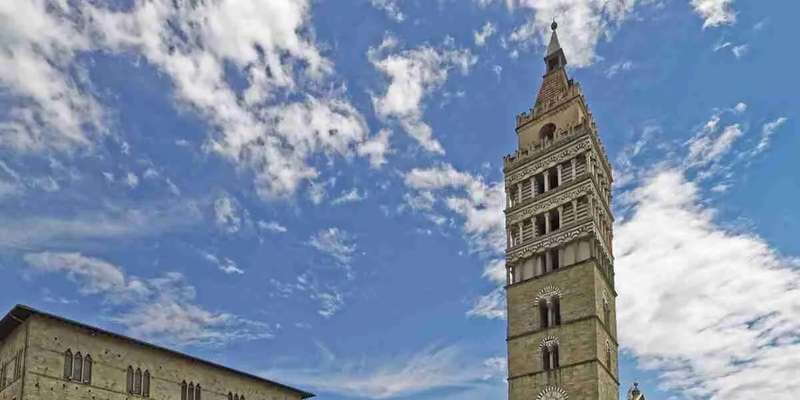- Home
- Useful Tips
- Pistoia's clock tower: what to know
Standing in Piazza del Duomo, Pistoia's 13th-century clock tower (Torre di Catilina) whispers tales of medieval intrigue – if you know how to listen. Most visitors rush through this Tuscan town en route to Florence, missing one of Italy's best-preserved historic centers. Recent tourism data shows 78% of day-trippers spend less than two hours in Pistoia, unaware that the tower offers panoramic views rivaling its famous neighbors. The real challenge? Navigating limited opening hours, steep staircases, and crowds that appear without warning. Unlike heavily marketed attractions, this local treasure requires insider knowledge to appreciate fully – from deciphering its unusual clock mechanism to finding the quiet moments when sunlight bathes the frescoed interior. Those who arrive unprepared often leave frustrated, having missed the tower's most captivating details or worse, finding the entrance closed.


Decoding the tower's tricky visiting hours
Pistoia's clock tower operates on a schedule that baffles many first-time visitors. Unlike Florence's attractions with extended hours, this municipal landmark opens briefly in mornings and late afternoons, often closing for midday breaks and special events. The secret lies in its dual role as both tourist attraction and functioning municipal clock – caretakers still wind the ancient mechanism manually. Locals know to check the small chalkboard by the entrance for last-minute changes, a detail most miss. For guaranteed access, target Tuesday through Friday mornings when school groups are rare. Should you find the door locked, the adjacent Palazzo Comunale often has staff who can confirm reopening times. Those willing to wait can enjoy nearby Caffè Valiani, where baristas know the tower's keepers and may share unofficial updates.
Mastering the climb with local insights
The 200-step ascent rewards visitors with unparalleled views across Tuscany's rooftops to the Apennines, but requires strategy. Narrow spiral staircases force alternating one-way traffic during busy periods – arrive before 10:30am to avoid queueing behind tour groups. Ancient stone steps wear smooth with centuries of use; the leather-soled shoes favored by locals provide better grip than sneakers. Midway up, pause at the clock mechanism chamber where 14th-century gears still keep time. Tower attendants note most visitors rush past this marvel to reach the top, missing the chance to see craftsmen perform the Thursday winding ritual. For photography enthusiasts, the western-facing parapet offers perfect late-afternoon light on Cathedral's striped marble facade, while early birds capture sunrise over the hills.
Pairing your visit with hidden neighborhood gems
Smart travelers extend their tower visit by exploring Pistoia's overlooked Ospedale del Ceppo, just three minutes walk away. Its colorful della Robbia terracotta frieze often has no crowds compared to Florence's versions. The tower's attendants recommend lunch at Trattoria dell'Abbondanza, where their families have dined for generations – try the tortelli di patate paired with local Montalbano wine. Few know the small Museo Civico includes your tower ticket, displaying artifacts found during its 20th-century restoration. For a perfect afternoon, time your descent when the nearby goldsmith workshops open their shutters, letting the clink of hammers accompany your stroll through Piazza della Sala's vibrant market.
Special access opportunities most miss
Between October and April, Pistoia's cultural association offers monthly 'Torre by Twilight' visits that include the usually-off-limits belfry level. These 90-minute experiences require advance booking but grant access to the original 1300s bell mechanisms and moonlight views over the city. Another well-kept secret: the tower participates in Italy's annual FAI Days when volunteers provide free access and share stories not found in guidebooks. For architecture buffs, the adjacent cathedral's archivists occasionally arrange combined tours explaining how the tower's foundations were built atop ancient Roman walls – visible in the basement during these special events. Regular visitors should inquire at the tourist office about upcoming concerts in the clock chamber, where Renaissance music resonates through the ancient stones.
